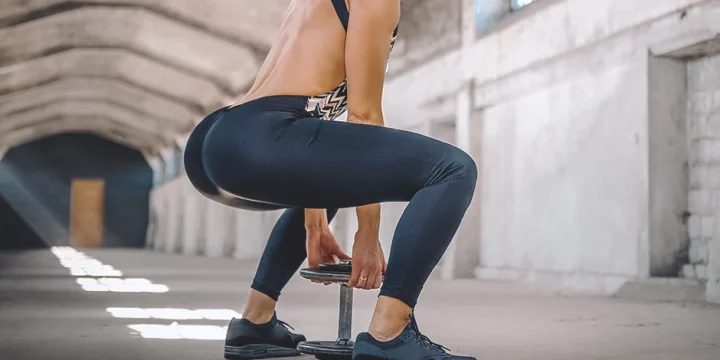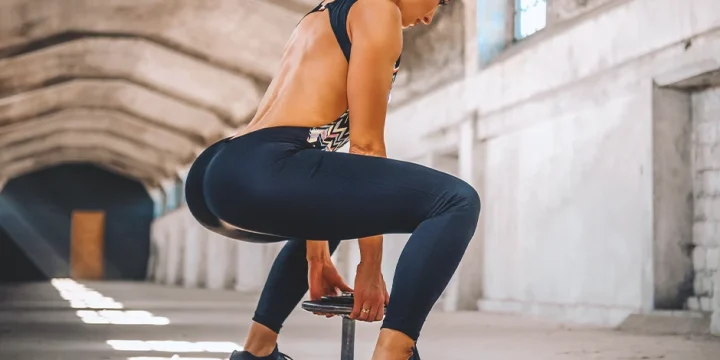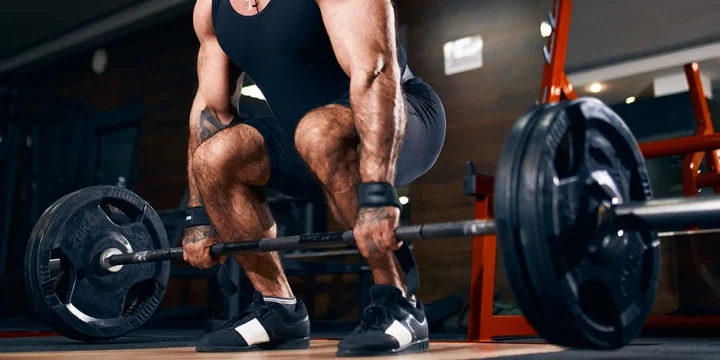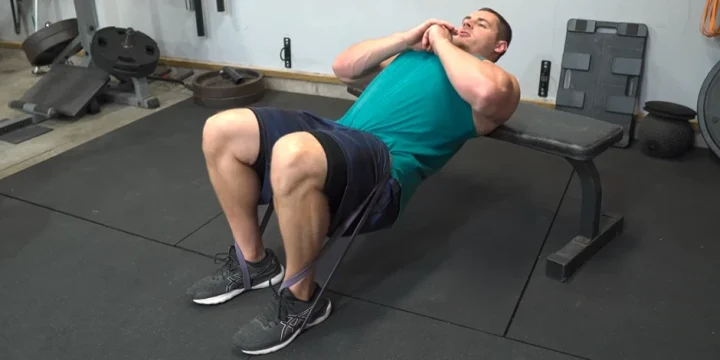With over ten years in the fitness industry, I always remind clients that strong hip extensors can help prevent injuries, boost performance, and ensure optimal daily function.
However, there are instances that I see in many workout routines where the hip joint is easily overlooked. So, I did a week of research and discussion with experts to identify the best hip extension exercises to enhance balance and coordination.
Our team tested these exercises, and after three months of testing, we picked six of our favorites that have improved hip mobility in both my clients and me.
Quick Summary
- The best exercises for muscles involved in hip extension include glute bridges, hip thrusts, step-ups, and kickbacks.
- The hip extension movement involves driving your hips forward, which increases the angle between your pelvis and thigh, ultimately opening the hip joint.
- According to the National Institute of Health, when the hamstring muscles are stretched, the performance of hip extension and knee flexion exercises improves.
- As a fitness trainer, I recommend clients with sedentary jobs include hip extension exercises in their routines to prevent tightness in both hip flexors and extensors.
6 Best Hip Extension Exercises

The exercises we picked will help keep the hip extensors strong and loose, making everyday activities like climbing stairs, walking, and standing from a sitting position easier.
1. Glute Bridge
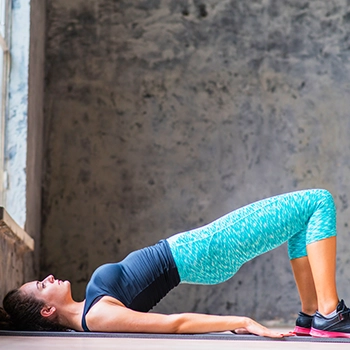
Hip extension relies on the glutes, making it ideal for strengthening those muscles. Bridges also support the hip flexors, offering a comprehensive hip exercise.
Here’s how to do it:
- Lie on your back.
- Bend your knees, keeping feet flat on the floor slightly wider than hip-width apart.
- Maintain a flat spine.
- Push through your heels to bridge off the ground
- Form a straight line from shoulders to knees.
- Squeeze your glutes at the top.
- Lower yourself slowly, maintaining glute tension.
- Repeat 10-15 times for 2-3 sets.
2. Hip Thrusts
You can add difficulty to this exercise by holding a barbell or a dumbbell across your hips.
Here’s how to do it:
- Sit with your upper back against a flat bench.
- Plant feet firmly on the floor in front of you, hip-width apart.
- Lift your hips off the floor.
- Form a straight line from your knees to your shoulders.
- Squeeze your glutes as you lift.
- Hold this position at the top for a few seconds.
- Slowly lower yourself back down until your glutes touch the ground again.
- Repeat for 10-15 reps, aiming for 2-3 sets.
Related: How to Do Hip Thrusts
3. Quadruped Hip Extension
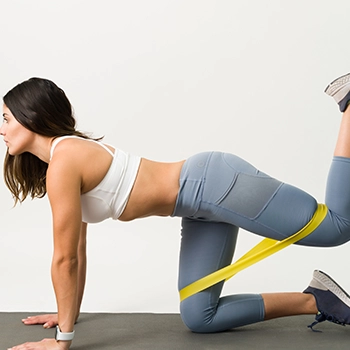
This classic hip extension, also known as "donkey kicks," targets the gluteus maximus, gluteus medius, and rectus femoris.
Here’s how to do it:
- Start in a quadruped position, aligning shoulders over wrists and hips with knees.
- Lift one leg, forming a 90-degree angle at the knee, and raise your heel toward the ceiling, reaching hip level.
- Squeeze the glutes, holding the top position briefly.
- Slowly return to the starting position and switch legs.
- Aim for 10-15 reps per leg across 2-3 sets.
4. Step Ups
Increase the intensity of this exercise by holding dumbbells, helping develop stronger glutes and core, and improving balance, coordination, and range of motion.
Here’s how to do it:
- Choose a sturdy bench or step wide enough to fit both feet.
- Stand facing it with feet hip-width apart.
- Place one right foot on the bench, keeping the left foot on the floor.
- Push down with your right leg, bringing your body up until feet are on the bench.
- Lower yourself back down by bending the knee of your right leg.
- Lower your left leg back to the floor, completing one rep.
- Repeat for 10-15 reps before switching legs.
- Aim for 2-3 sets.
“Having strong hip extensor muscles helps to stabilize the pelvis, reduce strain on the back, and can help improve your athletic performance in sports that require a lot of power.”
- Katey Davidson, MScFN, CPT
5. Standing Hip Extension
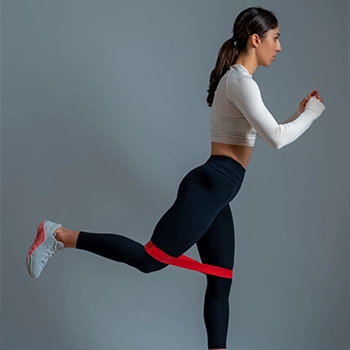
You can give your hip extensors a greater workout by performing this exercise with a resistance band placed just above your ankles.
Here’s how to do it:
- Stand with feet shoulder-width apart, hands on a wall or sturdy support.
- Move one leg straight back, aligning it with the other foot.
- Raise the heel of your back foot off the ground, pointing it forward.
- Keep hips aligned, knees slightly bent.
- Kick back with your leg, extending hips until you feel a stretch in your hamstrings and glutes.
- Ensure both legs stay straight.
- Hold for 10-15 seconds, then return to the starting position for one rep.
- Repeat for 10-15 reps on each side, aiming for 2-3 sets.
6. Stability Ball Prone Hip Extension
This movement will primarily target your hamstrings and glutes.
Here’s how to do it:
- Start by laying your hips on a stability ball, legs hanging off the back, toes lightly touching the floor.
- Place your hands on the floor in front of you, palms facing down, arms straight.
- Squeeze your glutes, lifting your legs until aligned with your upper body.
- Engage your core, keeping contact with the stability ball.
- Ensure straight knees and avoid overextending your back.
- Slowly lower your legs, repeating for ten reps.
- Aim for three sets.
Read Also: Hip Hinge Exercises for Stronger Hamstrings
What Is Hip Extension?
Hip extension is the action of moving your hips forward, increasing the angle between your pelvis and thigh and opening the hip joint.
This movement is the opposite of hip flexion, where the angle between the thigh and pelvis decreases.
In daily activities such as standing from a sitting position, jumping, kicking, climbing stairs, and walking, hip extension is commonly engaged.
In my training experience, I advise clients to aim for good form rather than speed while performing these exercises for maximum benefit and injury prevention.
Why Are Hip Extension Exercises Important?
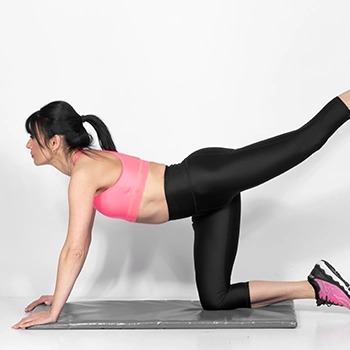
Hip extension exercises are important because they specifically target the gluteus maximus, hamstrings, and adductor magnus – the three key muscles involved in hip extension.
When hip extensor muscles are weak, the proper movement of the hip joint can be compromised, possibly relying on nearby muscles for assistance.
This often involves the lower back muscles, which can lead to pain or injury, as indicated by research from PubMed [1].
You May Also Like:
FAQs
What Muscle Assists Hip Extension?
The muscle that assists hip extension is primarily the gluteus maximus. However, it is also assisted by the hamstrings and the adductor magnus, a triangular-shaped muscle in the thigh.
What Activities Use Hip Extension?
Many activities use the hip extension, including stair climbing, running, jumping, and standing up from sitting.
Reference:
- https://pubmed.ncbi.nlm.nih.gov/31440415/
About The Author
You May Also Like
